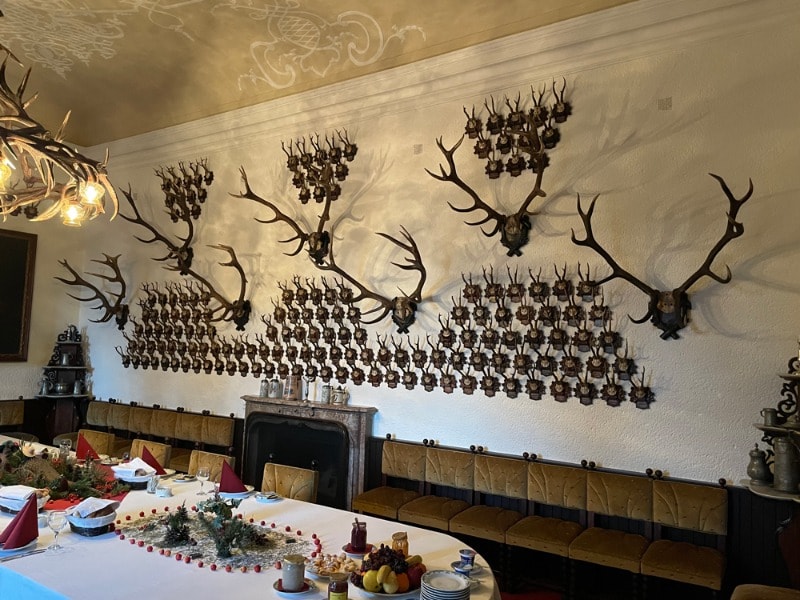Shooting The King's Pheasants
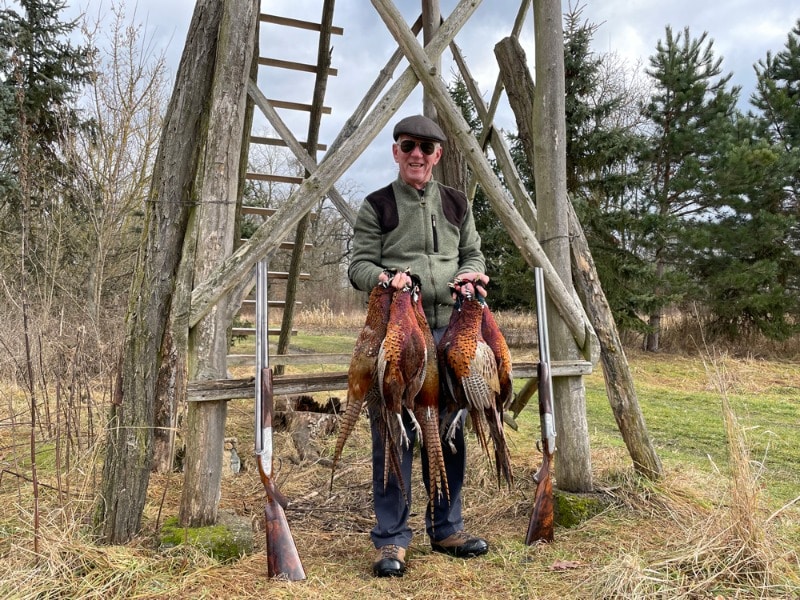
Members of the Habsburg Monarchy (the Austria/Hungary empire) started shooting driven pheasants in this area, around the 1870s; though they had been hunting other game here for centuries. Likely Franz Josef I (1830-1916), Emperor of Austria, King of Hungary hunted here, during his reign. The Treaty of Versailles, that ended World War I, in 1919, divided up (eliminated) the “Habsburg empire” and established/recognized the new country of Czechoslovakia, now the Czech Republic -- which since then has owned and managed
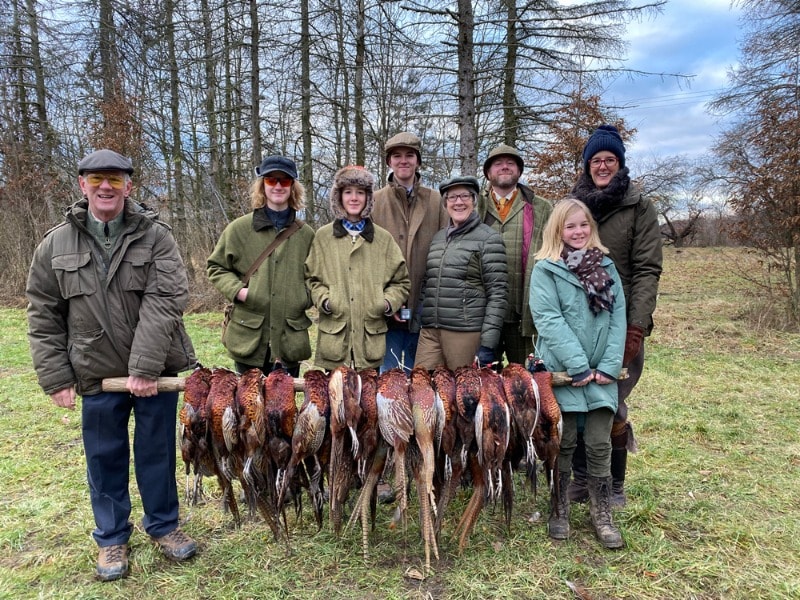
this former hunting area of the Habsburg Monarchy.
Our family group of eight made our first visit to this part of the world, specifically to shoot their driven pheasant; and stayed at the well-maintained, centuries old, Zidlochovice Chateau. The Chateau was a serious highlight of the trip -- second only to the shooting. It has an elegant, vintage, museum-type atmosphere, with paintings and hunting mounts on every wall. We left each morning, just after breakfast and returned for our “gin and
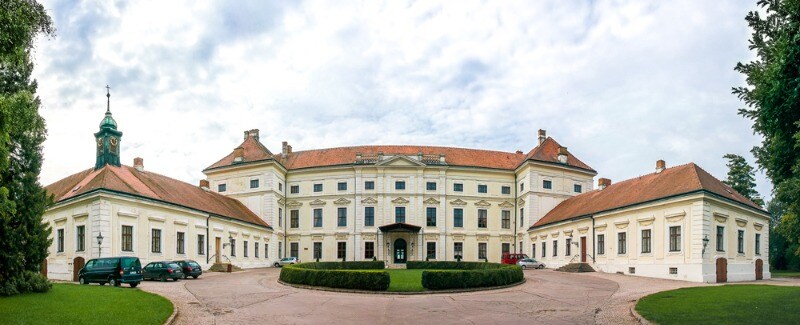
tonic,” or tea at the end of the day’s shooting.
This property is about 20,000 acres of pretty flat ground, which isn’t naturally ideal for driven birds, so they have meticulously divided up and developed the land into small parcels of woodlands, shelter belts and food plots. This facilitates the survival of the young pheasants, which are released into the wild each summer. The food and habitat also keep the adult birds on the property during the fall hunting season. Spruce
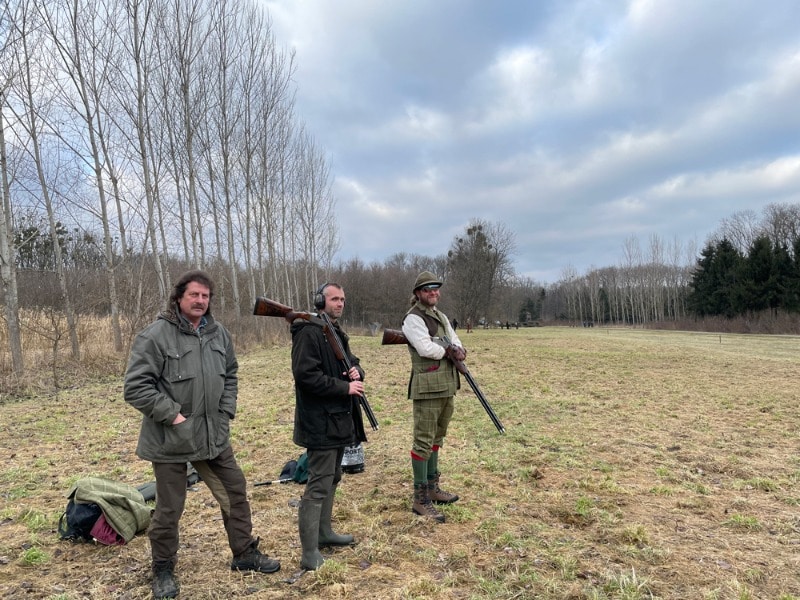
trees at the ends of the drives, help get the birds in the air for the shooters.
The pheasants, as presented, were a mixture of low (20 yards) and medium (30 yards) in distance. Shooters were stationed about 40-50 yards apart, so the opportunity to “help out your neighbor” allowed the more experienced shooters to take the more challenging, slightly angled, 40 yard plus shots. I was a bit over gunned for this shoot, having chosen a pair of 12 bore
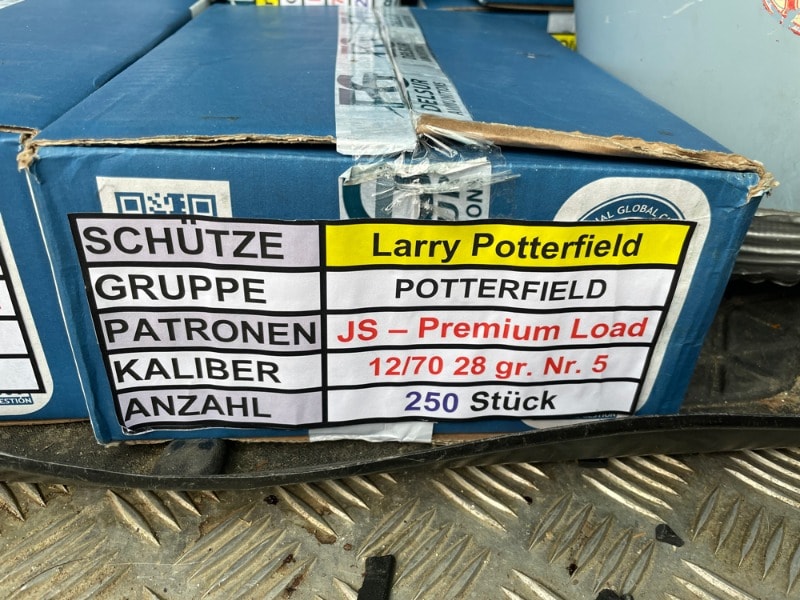
Purdey O/U guns, with ½ and full choke tubes; but I did shoot an average of 59% over three days.
Hopefully I will pay a return visit to this driven shoot. There is only one change to consider; a different pair of guns. Likely I will bring a pair of 28 gauge or 410 bore shotguns, which in my mind would be more appropriate for a gentleman to use on such beautifully presented driven- pheasants, that are literally “fit for the King.”
